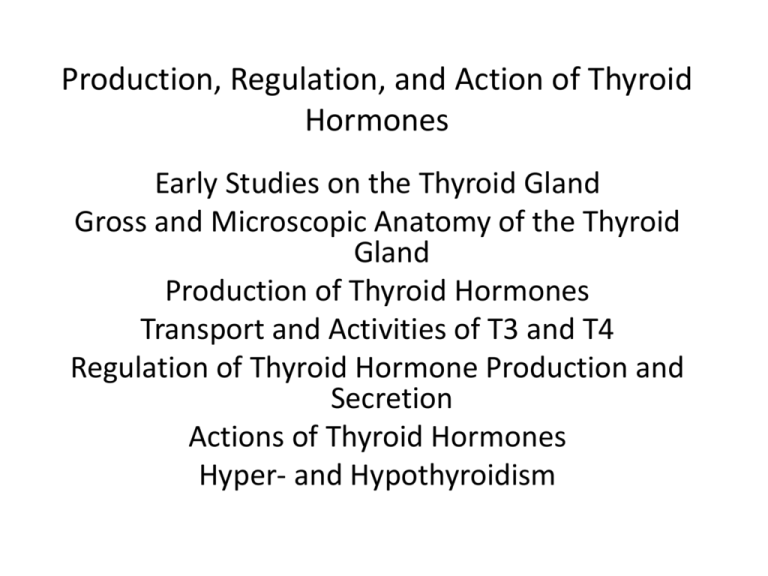Thyroid Hormone Production Biology Diagrams Thyroid gland - Regulation, Hormone, Secretion: The thyroid gland is one component of the hypothalamic-pituitary-thyroid axis, which is a prime example of a negative feedback control system. The production and secretion of thyroxine and triiodothyronine by the thyroid gland are stimulated by the hypothalamic hormone thyrotropin-releasing hormone and the anterior pituitary hormone thyrotropin.

The central regulation of thyroid hormone production by TRH/TSH integrates signals from nutritional feedback, as well as the adrenergic nervous system . Models, such as fasting and illness, provide further information on how TH mediates adaptations to protect energy storage in times of stress to the organism. TH regulates both basal metabolic

Regulation of thyroid hormone secretion Biology Diagrams
While the internal circuitry plays a pivotal role in thyroid hormone regulation, external factors can also significantly influence thyroid function. These factors can either enhance or inhibit the synthesis and release of thyroid hormones. Dietary Influence: Iodine plays a vital role in the production of thyroid hormones.

The main function of the thyroid gland is to make hormones, T4 and T3, which are essential for the regulation of metabolic processes throughout the body. As at any factory, effective production depends on three key components - adequate raw material, efficient machinery, and appropriate controls. Iodine is the critical raw material, because 65% of T4 weight is iodine. Ingested iodine is Thyroid hormone is the hormone that controls your body's metabolism. Thyroxine (T4) and triiodothyronine (T3) collectively make up thyroid hormone. The production and release of thyroid hormone — thyroxine (t4) and triiodothyronine (T3) — is controlled by a feedback loop system that involves the following: Advertisement. The thyroid is an endocrine gland. Its location is in the inferior, anterior neck, responsible for the formation and secretion of thyroid hormones and iodine homeostasis within the human body. The thyroid produces approximately 90% inactive thyroid hormone, or thyroxine (T4), and 10% active thyroid hormone, or triiodothyronine (T3). Inactive thyroid hormone is converted peripherally to either

Thyroid hormones Biology Diagrams
The thyroid system of the thyroid hormones T 3 and T 4 [1]. Thyroid hormones are two hormones produced and released by the thyroid gland, triiodothyronine (T 3) and thyroxine (T 4).They are tyrosine-based hormones that are primarily responsible for regulation of metabolism.T 3 and T 4 are partially composed of iodine, derived from food. [2] A deficiency of iodine leads to decreased production Shown are the key components required for thyroid hormone action, as demonstrated by a range of clinical observations. (A) The TR gene has 2 major isoforms, TRβ and TRα; the structures of TRα1 and TRα2 (non-T3-binding) and TRβ1 and TRβ2 are shown.(B) The major thyroid hormone forms, T4, T3, and rT3.(C) Circulating T4 is converted locally in some tissues by membrane-bound D2 to the Furthermore, thyroid hormone biosynthesis and secretion are maintained within narrow limits by a regulatory mechanism that is very sensitive to small changes in circulating hormone concentrations. The processes of thyroid hormone synthesis, transport, and metabolism, and the regulation of thyroid secretion will be reviewed here. The actions of
